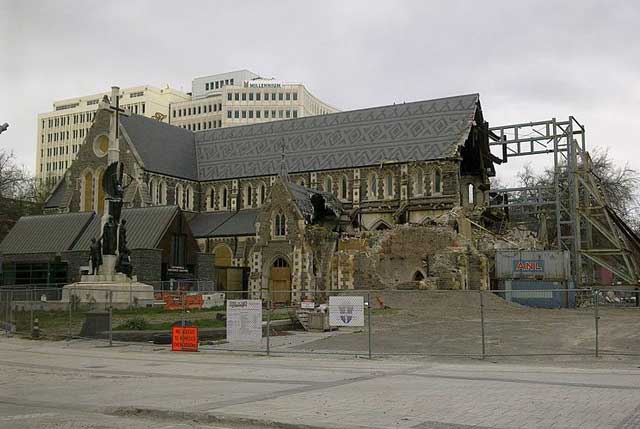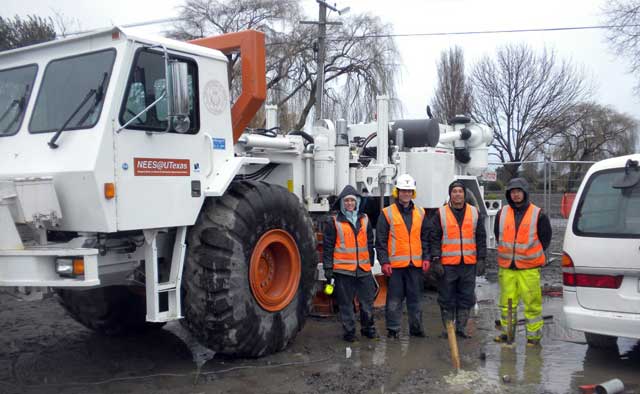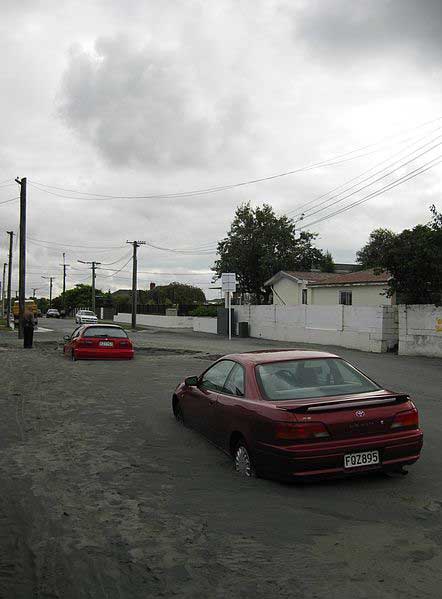|
Earth-shaking researchU.S. study on liquefaction in Christchurch may have far-reaching applicationsPosted August 16, 2013
Researchers from the University of Texas at Austin The team visited New Zealand’s second largest city this summer to conduct field research on liquefaction, the process by which water-saturated sediments, or soil, temporarily become liquid-like. Previous earthquake coverage
“This liquefaction fieldwork has never been done before and represents critical, basic research as well as important practical knowledge for Christchurch to move forward in its developments,” said Kenneth Stokoe On Sept. 4, 2010, a 7.1-magnitue earthquake rocked the New Zealand’s Canterbury region on the South Island, with much of the damage centered near Christchurch. Nearly six months later, on Feb. 22, 2011, a shallow aftershock of 6.3-magntitude devastated the city center and killed more than 180 people in the country’s fourth-deadliest disaster in history. Christchurch serves as the primary gateway to Antarctica for the U.S. Antarctic Program (USAP) The quake devastated the city central business district, which fully re-opened to the public at the end of June of this year. The iconic ChristChurch Cathedral was also severely damaged during the February 2011 earthquake. A temporary “cardboard” cathedral building took its place and opened this month. As many as 7,500 homes have been abandoned because of earthquake damage, and approximately 2,400 out of 3,000 structures in the central business district have been demolished, according the UT press release. “The study will impact the future Christchurch society through the development of more robust seismic designs of residential structures for more than 15,000 homes,” Stokoe said. The National Science Foundation (NSF) In 2011, NSF funded more than 40 RAPID grants for about $2.5 million for studies associated with the earthquakes that hit both Christchurch and Japan. [See previous article — Shifting through the pieces: NSF funds RAPID grants to study effects from New Zealand, Japan earthquakes.] About 15,000 earthquakes occur in and around New Zealand each year, with about 250 big enough to be felt, according to GeoNet The UT project’s goal is to determine whether various ground improvement methods help inhibit liquefaction, and which of the methods tested would be most cost-effective. The liquefaction testing was conducted using a large mobile shaker truck, called T-Rex The research may have applications for earthquake-prone cities in the United States, as well as numerous other parts of the world. The first phase of testing should be complete by August. “We will work for another year to dig deeper into the basic research findings,” Stokoe said. “This stage mainly determines which ground improvement methods are best suited for Christchurch and will allow them to move forward in rebuilding a resilient city.” NSF-funded research in this story: Kenneth Stokoe and Brady Cox, University of Texas at Austin, Award No. 1343524 |



For USAP Participants |
For The Public |
For Researchers and EducatorsContact UsNational Science FoundationOffice of Polar Programs Geosciences Directorate 2415 Eisenhower Avenue, Suite W7100 Alexandria, VA 22314 Sign up for the NSF Office of Polar Programs newsletter and events. Feedback Form |




